Football Training Tips for Success
Whether you’re a newcomer to the exciting world of football or a seasoned player looking to sharpen your skills, focusing on key aspects of the game can provide immense benefits to your performance on the field. This comprehensive guide offers football training tips to help you become a well-rounded player by covering strength and conditioning, speed and agility, passing and receiving, dribbling and ball control, shooting and finishing, defending and tackling, as well as set pieces and tactics.
Strength and Conditioning
Introduction:
To improve your football skills and overall athleticism, it’s essential to incorporate strength and conditioning exercises into your training routine. By focusing on both your upper and lower body, you’ll develop a well-rounded physique that allows you to perform at your peak on the field. Here are some key exercises and workouts to help you enhance your strength and conditioning for football.
1. Warm-up:
Begin with a 5-10 minute dynamic warm-up to increase your core temperature, loosen up your muscles, and prepare your body for the exercises ahead. This can include jogging, high knees, butt kicks, side shuffles, and arm circles.
2. Upper Body Exercises:
To develop strength and power in your upper body, focus on these key exercises:
- a) Push-ups: In addition to targeting your chest and shoulders, push-ups also help to strengthen your core and improve stability. Aim for 3 sets of 10-15 repetitions, with a one-minute rest between sets.
- b) Pull-ups: Pull-ups are a great exercise for targeting your back, arms, and shoulders. If you can’t perform a full pull-up, start with assisted pull-ups using a band or a machine. Perform 3 sets of 8-12 repetitions, with a one-minute rest between sets.
- c) Dips: Dips primarily target your triceps, chest, and shoulders. Use parallel bars or a dip station and lower yourself until your elbows are bent at a 90-degree angle. Push yourself back up to complete one repetition. Perform 3 sets of 8-12 repetitions, with a one-minute rest between sets.
3. Lower Body Exercises:
Lower body strength is crucial for football players as it helps with explosive movements, agility, and overall athleticism. Focus on these key exercises:
- a) Squats: The squat is a foundational movement that targets your quadriceps, hamstrings, glutes, and core. Stand with your feet shoulder-width apart, lower your hips as if sitting in a chair, and then stand back up. Perform 3 sets of 8-12 repetitions, with a one-minute rest between sets.
- b) Lunges: Lunges are another great exercise for building lower body strength and stability. Stand with your feet hip-width apart, take a step forward with one leg, and lower your back knee to the ground while keeping your front knee at a 90-degree angle. Push through your front foot to return to the starting position. Perform 3 sets of 8-12 repetitions on each leg, with a one-minute rest between sets.
- c) Deadlifts: Deadlifts are an essential exercise for developing your posterior chain, which includes your hamstrings, glutes, and lower back. Start with a kettlebell or barbell on the ground, bend at your hips and knees, and then lift the weight by standing up and extending your hips. Perform 3 sets of 8-12 repetitions, with a one-minute rest between sets.
4. Conditioning:
Football requires a mix of both aerobic and anaerobic conditioning. Incorporate the following workouts to build your endurance and stamina:
- Interval Sprints: Sprint for 30 seconds, then walk or jog for 60 seconds. Repeat this cycle for 10-15 minutes.
- Hill Runs: Find a steep hill and sprint up for 20-30 seconds, then walk back down to recover. Repeat for 10-15 minutes.
- Agility Drills: Set up cones or markers and perform various agility drills, such as shuttle runs, T-drills, or ladder drills. Aim for 10-15 minutes of continuous work.
5. Cool Down:
Finish your strength and conditioning session with a 5-10 minute cool down that includes static stretching and light aerobic exercise, such as walking or jogging.
Conclusion:
By incorporating these exercises and workouts into your football training routine, you’ll be well on your way to improving your strength, conditioning, and performance on the field. Remember to stay consistent with your training, fuel your body properly, and allow time for recovery to maximize your results.
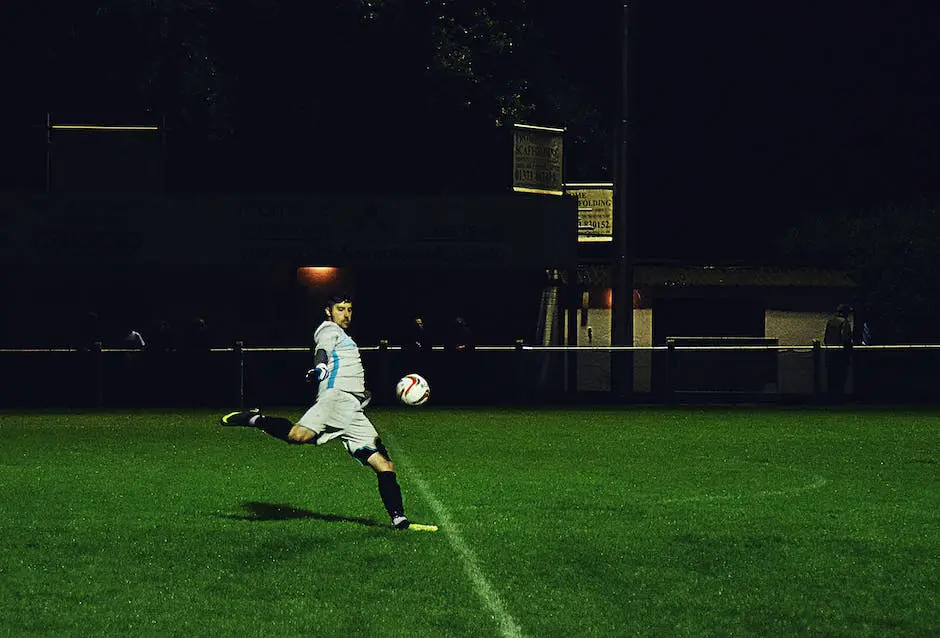
Speed and Agility
Introduction:
Improving your speed and agility is essential when you’re training to become a better football player. These skills help you evade defenders, make sharp cuts, and accelerate quickly. Here are some workouts and drills that will boost your sprinting speed and enhance your agility on the football field.
Drill 1: Shuttle Sprints
Purpose: Develop acceleration and speed necessary for football
- Set up three cones in a straight line, with each cone 5 yards apart.
- Start at the first cone, sprint to the second cone, then back to the first cone.
- Immediately sprint to the third cone and then back to the first cone.
- Rest for 60 seconds, then repeat the drill 4-6 times.
Drill 2: T-Drill
Purpose: Improve change-of-direction speed and agility
- Set up four cones to form a T-shape, with each cone 5 yards apart.
- Start at the bottom of the T, sprint to the middle cone, then shuffle laterally to the left cone.
- Shuffle laterally to the right cone, then return to the middle cone.
- Backpedal to the starting cone (bottom of the T).
- Rest for 60 seconds and then repeat the drill 4-6 times. Alternate your starting side each rep.
Drill 3: Ladder Drills
Purpose: Enhance footwork and agility
- Use an agility ladder or create one with chalk or tape on the ground.
- Perform various footwork patterns through the ladder, such as the high knees, in-and-outs, and lateral steps.
- Repeat each pattern 4-6 times.
Drill 4: Zigzag Sprints
Purpose: Develop quick-direction changes and acceleration
- Set up five cones in a zigzag pattern, with each cone approximately 5 yards apart.
- Starting at the first cone, sprint to the second cone, making a sharp cut as you change direction.
- Continue sprinting and changing directions between cones until you reach the final cone.
- Rest for 60 seconds, then repeat the drill 4-6 times.
Drill 5: Box Jumps
Purpose: Improve explosiveness and power for acceleration
- Set up a plyometric box or stable platform at a challenging height you can safely jump on.
- Stand facing the box, with your feet shoulder-width apart.
- Bend your knees and lower into a squat, then explode upwards onto the box.
- Land softly on the box with both feet, then step down to the starting position.
- Repeat 3 sets of 8-10 jumps. Rest 60 seconds between sets.
Conclusion:
Incorporate these speed and agility drills into your football training routine at least twice a week. Monitor your progress, and don’t forget to focus on proper technique to avoid injury. Combined with good nutrition, sleep, and a well-rounded training program, these drills will help you become faster and more agile on the football field.
Passing and Receiving
Introduction:
Mastering passing and receiving in football is essential for any player looking to improve their overall skills. The following exercises will help you enhance your passing accuracy and ball control, ultimately increasing your confidence on the field.
Exercise 1: Short Passing
Objective: Improve your short-passing accuracy and first-touch receiving skills.
- Find a partner to practice with you, or use a wall to rebound the ball.
- Begin by standing about 10 yards away from your partner or the wall.
- Practicing using both feet, execute a short pass to your partner or against the wall.
- As you receive the ball back, control it with one touch and pass it back using your other foot.
- Repeat for a total of 30 passes with each foot – focusing on accuracy and proper technique.
Exercise 2: Long Passing
Objective: Improve your long-passing accuracy and receiving skills with aerial balls.
- Find a partner to practice with, and stand approximately 30-40 yards away from each other.
- Take turns passing the ball to each other with medium to high trajectory.
- Focus on accurately striking the ball with either the inside or outside of your foot, depending on the desired pass type.
- Practice both passing and receiving the ball with both feet.
- Repeat for a total of 15 passes with each foot – focusing on precision, strength, and proper technique.
Exercise 3: One-Touch Passing
Objective: Develop your one-touch passing and receiving skills.
- Stand about 10 yards away from your partner or a wall.
- Pass the ball back and forth without taking a touch to control the ball.
- Focus on receiving and passing the ball in one clean motion.
- Practice passing with both feet and different parts of your foot (inside, outside, and instep).
- Repeat the exercise for 30 passes with each foot – focusing on accuracy and proper technique.
Exercise 4: Triangle Passing
Objective: Improve passing and receiving skills by working on movement off the ball.
- Set up three cones in a triangle formation, approximately 15 yards apart from each other.
- Three players stand at each cone (if you don’t have partners to practice with, use a wall and alternate cones to simulate another player).
- Player A starts with the ball and passes to Player B.
- As Player B receives the ball, Player A moves to the cone that Player B initially occupied.
- Player B then passes to Player C, while Player A continues moving to the next open cone.
- The cycle continues, with players constantly moving into the next open space after passing.
- Practice this drill for 5 minutes, then switch to the opposite direction to practice with both feet.
Exercise 5: One-on-One Passing and Receiving
Objective: Improve passing accuracy and receiving skills under pressure.
- Pair up with a partner.
- Set two cones approximately 30 yards apart, with one player standing at each cone.
- Player A starts with the ball and attempts to pass it to Player B.
- Between the two players, introduce a defender who will try to intercept or block the pass (ensure the defender does not tackle during the drill).
- Rotate between the roles of passer, receiver, and defender.
- Keep practicing one-on-one passing and receiving under pressure, focusing on accurate passes and proper first touch control.
Conclusion:
Consistent practice of these passing and receiving exercises will help you build your skills and confidence on the field. Be patient, remember to keep assessing your performance and adjust your techniques as necessary.
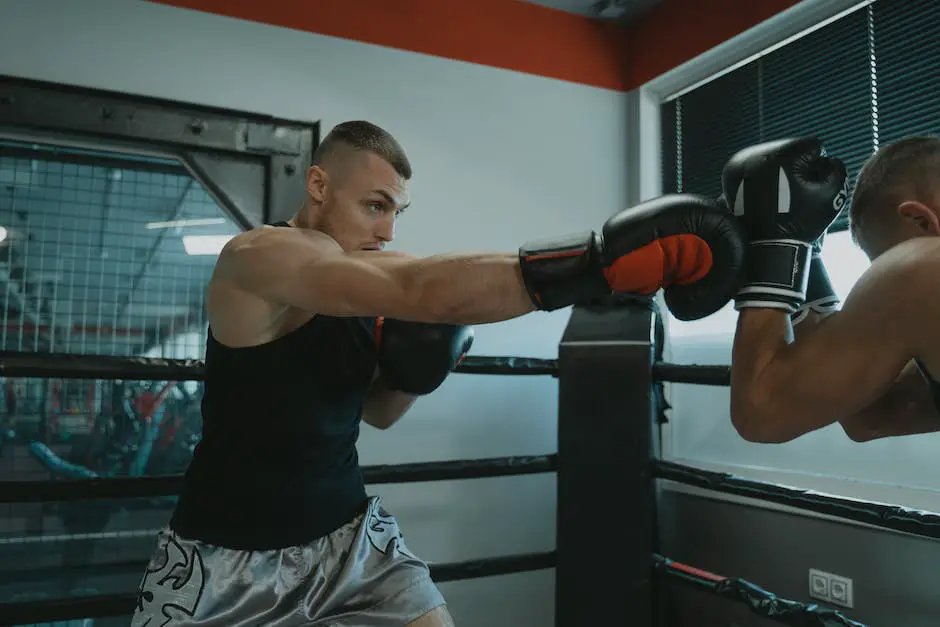
Dribbling and Ball Control
Dribbling and Ball Control Drills
Dribbling and ball control are essential skills for any football player. Mastering these techniques allows you to maneuver the ball effectively, evade opponents, and create scoring opportunities for your team. In this guide, we will outline several exercises and drills to enhance your ball handling skills.
Cone Dribbling Drill:
- Set up a line of cones about 2 feet apart from each other.
- Start at one end of the cone line, with the ball at your feet.
- Dribble the ball through the cones, using the inside and outside of both feet.
- Keep your head up and maintain a low center of gravity.
- Focus on keeping the ball close to your feet and using quick touches to change direction.
- Once you reach the end of the cone line, turn around and repeat the drill.
Figure-Eight Dribbling Drill:
- Place two cones about 10 feet apart.
- Begin at one cone, with the ball at your feet.
- Dribble in a figure-eight pattern around the cones, using the inside and outside of both feet.
- Keep the ball close to your feet and focus on quick, agile movements.
- Increase the speed of the drill as your skill level improves.
Wall Pass and Control Drill:
- Find a wall or rebounder to use as a passing target.
- Stand about 10-15 feet away from the wall with the ball at your feet.
- Pass the ball off the wall and control the rebound with your first touch.
- Vary the type of pass (ground pass, driven pass, lofted pass) and which foot you pass with to improve versatility.
- Practice turning with the ball after controlling the rebound.
One-on-One Dribbling Drill:
- Set up two cones about 20 feet apart to act as goals (can also use lines on the field, such as sidelines or penalty areas).
- Have a partner or coach act as a defender, standing between you and the goal.
- Begin with the ball at your feet and attempt to dribble past the defender without losing control of the ball.
- Use changes of speed and direction, as well as feints, to evade the defender.
- Encourage the defender to maintain realistic pressure and challenge for the ball.
- Alternate roles, allowing each player the opportunity to practice dribbling and defending.
Ball Juggling:
- Begin with the ball in your hands.
- Drop the ball and use your dominant foot to kick it back up into your hands, focusing on a soft first touch.
- Progress to using both feet, alternating touches, and incorporating thighs and head.
- Aim to keep the ball in the air as long as possible, challenging yourself to beat your previous high score.
Conclusion:
Regularly practicing these dribbling and ball control exercises will help improve your ball handling skills, enhancing your overall performance on the field. Remember to maintain patience and consistent effort, as mastery takes time and dedication. Happy training!
Shooting and Finishing
Introduction
Developing your striking abilities and enhancing your finishing skills can make a significant difference on the field. In this guide, we will cover essential techniques, accuracy, and power-boosting tips for improving your shooting and finishing skills in football.
Step 1: Mastering the Proper Shooting Technique
- 1.1. Focus on your non-kicking foot’s placement. Plant your non-kicking foot firmly beside the ball and point your toes towards the intended target. This will help you maintain balance and accuracy during the shot.
- 1.2. Keep your body over the ball. Lean slightly forward over the ball to maintain control and avoid shooting too high.
- 1.3. Use the correct part of your foot. The most effective part of your foot to use when shooting is the area around the instep (the part where the laces are). This will provide you with better accuracy and power.
- 1.4. Follow through with your leg. After making contact with the ball, continue to swing your leg forward in the direction of your target. This follow-through is crucial for generating power in your shot.
Step 2: Practicing Accuracy Drills
- 2.1. Practice one-touch finishes. Set up a small goal or mark a target area using cones. Have a teammate or coach deliver passes to you, and work on taking one-touch shots aimed at the target. Focus on striking the ball accurately with a quick, controlled movement.
- 2.2. Set up target zones. Practice hitting specific areas within the goal or around it. For example, aim for the corners or a particular spot on the crossbar. Consistently working on hitting precise targets will improve your ability to pick out spots during matches.
- 2.3. Keep track of your progress. Measure your success rate during accuracy drills and work on improving those numbers over time. Consistent practice and tracking progress will help boost your confidence and skill on the field.
Step 3: Developing Power in Your Shots
- 3.1. Strengthen your leg muscles. Incorporate lower body strength exercises, like squats, lunges, and leg presses, into your regular workout routine. A stronger lower body will allow you to generate more power in your shots.
- 3.2. Utilize your core muscles. Engaging your core during the shooting motion will help you maintain balance and channel more power through your leg. Practice ab strengthening exercises like planks, leg raises, and Russian twists to build a strong core.
- 3.3. Increase flexibility. Improved flexibility can lead to a greater range of motion and increased power in your shots. Include stretching exercises in your fitness routine, focusing on your hips, hamstrings, and quadriceps to boost flexibility.
Step 4: Applying Shooting and Finishing Techniques in Game Situations
- 4.1. Train in game-like scenarios. Practice your shooting and finishing during scrimmages and small-sided games, simulating match situations as much as possible. This will help you translate your skills from training to the field.
- 4.2. Remain composed under pressure. Practice staying calm and focused when shooting in high-pressure situations. Take a deep breath and visualize yourself scoring before taking the shot. This mental preparation will help you stay composed and make better decisions during the game.
Conclusion
Through consistent practice of the proper techniques, working on accuracy drills, and developing your power, you will see significant improvements in your shooting and finishing abilities. Incorporate these tips into your training routine to elevate your skills and your overall performance on the field.
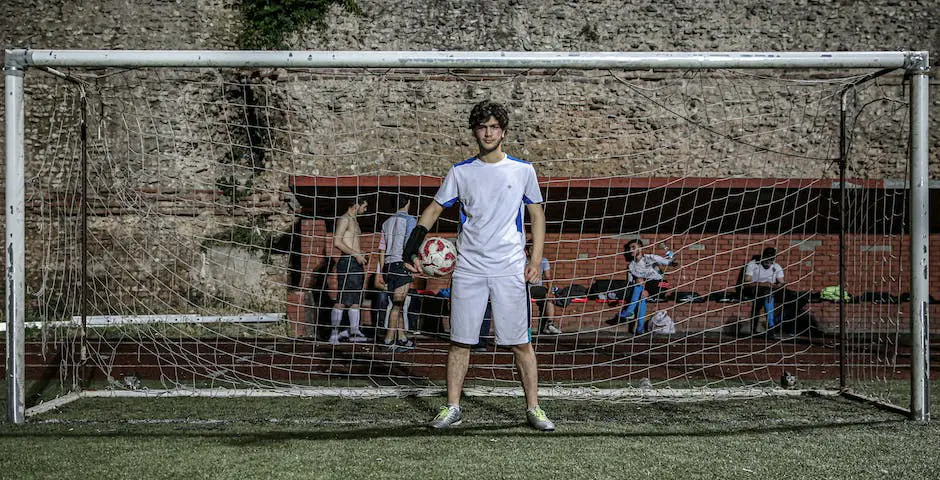
Defending and Tackling
Introduction:
Learning how to defend and tackle effectively in football is an essential skill for any player, regardless of their position on the field. In this guide, we’ll cover the basic techniques and strategies you need to know to become a successful defender and tackler in football. By mastering these skills, you will enhance your ability to win back possession and stop opponents.
Materials Needed:
- Football
- Practice cones or markers
- Willing practice partners or teammates
Defending Techniques:
- Stance and Body Position: Start with a good defensive stance by bending your knees slightly and keeping your body low to the ground. Keep your weight on the balls of your feet to maintain quickness and balance. Maintain a square-on body position to your opponent, with your arms around shoulder-width apart to prevent them from getting past you.
- Reading the Play: Anticipate your opponent’s movements by observing their body language and paying attention to the position of the ball. This awareness will give you a better chance to intercept passes or block shots.
- Marking Your Opponent: Stay close to the player you are marking, typically within arm’s length. Keep your eyes on the ball and your opponent, and be prepared to close in or step off, depending on their movements and actions.
- Jockeying: When an opponent is in possession of the ball, approach them while maintaining your defensive position. Move your feet quickly and stay balanced, not committing to any direction until you are sure of their next move. Force the attacker into a less-threatening position or toward one of your teammates for support.
- Patience: It’s crucial to be patient in defending. Do not dive into tackles or lunge at your opponent, as this could result in giving away fouls or leaving open spaces for them to exploit. Instead, focus on containing the attacker and wait for the right moment to tackle or intercept.
Tackling Techniques:
- The Block Tackle: Approach the attacker diagonally and step in with your leading foot, keeping your weight on the back foot. Place your leading foot alongside or slightly ahead of the ball, with your toe pointing toward your target. Extend your other leg and lean into the tackle, making contact with the ball using the inside of your foot. Maintain a low center of gravity and keep your eyes on the ball during the tackle.
- The Poke Tackle: Time your approach to coincide with the moment when the attacker’s touch takes the ball slightly away from their body. Quickly step in, extending your foot and using your toes or the front part of your boot to poke the ball away. Be careful not to make contact with the attacker’s leg, as this could result in a foul.
- Slide Tackle: Only attempt a slide tackle when necessary and when you’re confident you can win the ball. Approach at an angle, keeping your eye on the ball as you slide in. Lead with your leg closest to the attacker and use the inside of your foot or your shin to make contact with the ball. Keep your trailing leg bent and your arms out for balance.
Practice Drills:
- One-vs-One Defending: Set up a small grid using cones, with an attacker and defender at opposite ends. The attacker dribbles towards the defender, and the defender’s goal is to stop the attacker from getting past and crossing the end line.
- Tackling Relay: Set up two lines of cones for players to dribble through. At the end of each line, place a defender. The attacking player must dribble through the cones and attempt to get past the defender using a block or poke tackle.
- Defending in Numbers: Set up a larger grid with multiple attackers and defenders. Have the attackers move the ball around and attempt to create scoring opportunities, while the defenders work together to maintain their shape and win the ball back.
Conclusion:
By practicing these techniques and drills, you’ll soon improve your defending and tackling abilities. The key is patience, excellent body positioning, and timing. As you become more confident in your defensive skills, you’ll find your ability to win back possession and stop opponents greatly enhanced.
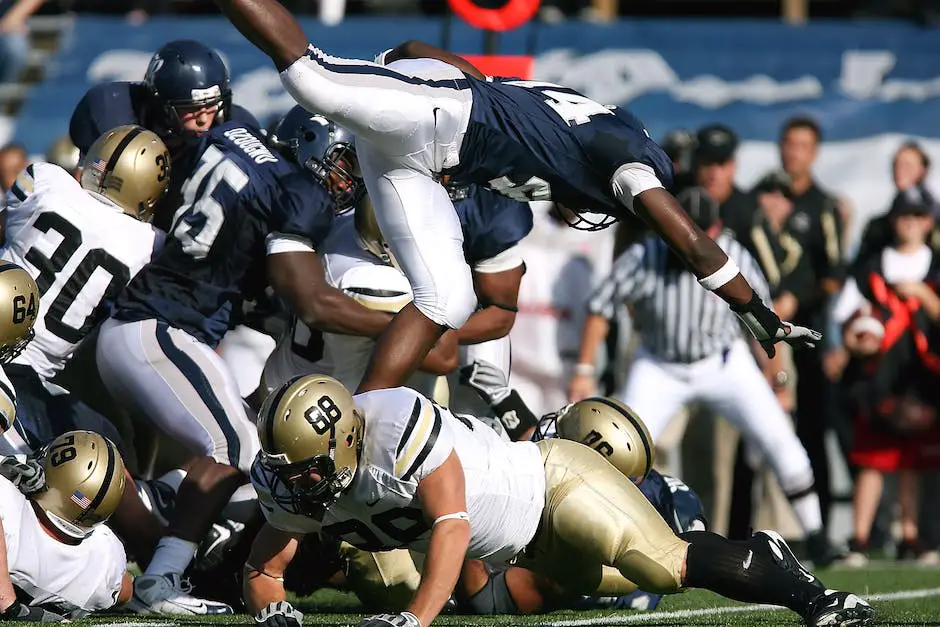
Set Pieces and Tactics
Introduction:
To excel in football, it’s essential to have a strong grasp of set pieces and tactics. These aspects of the game can be the difference-makers, often swinging the momentum and outcome of a match. By following these instructions, you’ll improve your knowledge and skills in executing both offensive and defensive set plays during crucial moments.
Part 1: Corners
-
Attacking corner kicks:
- Swinging the ball in: Aim for the ball to reach the area between the penalty spot and the 6-yard box, where your teammates will make runs towards the goal.
- Near-post or far-post runs: Designate players to make runs to the near and far posts, attempting to beat defenders to the ball.
- Screen or block defenders: Have a teammate block or screen a defender to create space for other attacking players to make runs.
- Mix things up: Keep the opposing team guessing by varying your corner kick delivery and play types (e.g., short corners, long-range shots).
-
Defending corner kicks:
- Man-to-man marking: Assign defenders to specific attacking players, ensuring they maintain close proximity to prevent them from making a clean header or shot on goal.
- Zonal marking: Assign defenders to specific areas of the penalty box to protect those spaces instead of man-marking opponents.
- Goalkeeper communication: Ensure your goalkeeper communicates with defenders regarding positioning and potential threats.
- Clearing the ball: When the ball enters your zone or comes near you, focus on making strong, decisive clearances, ideally toward the sidelines.
Part 2: Free Kicks
-
Attacking free kicks:
- Shooting: If within shooting range, aim to strike the ball with enough power and accuracy to challenge the goalkeeper.
- Crossing: Deliver an accurate cross into the box, aiming for a teammate to make a run or exploit space created by a screen.
- Dummy runs: Have players make runs to distract defenders, creating space for other attackers or drawing a foul.
- Wall positioning: Ensure your attackers position themselves close to the defensive wall, potentially blocking the goalkeeper’s view.
-
Defending free kicks:
- Building a wall: Create a wall of players between the ball and the goal to block the opponent’s shot.
- Goalkeeper positioning: Ensure the goalkeeper positions themselves to cover angles not protected by the wall.
- Man-to-man marking: Assign defenders to mark attacking players, limiting their ability to exploit open space.
- React quickly: Stay alert for possible dummy runs and quick free kick attempts.
Part 3: Penalties
-
Taking penalties:
- Focus and composure: Maintain focus and stay calm under pressure.
- Select a target: Choose a specific spot in the goal to aim for.
- Consistent approach: Practice a consistent run-up and contact point on the ball.
- Eyes on the ball: Keep your eyes on the ball and do not look at the goalkeeper or goal until after you’ve made contact with the ball.
-
Defending penalties:
- Goalkeeper tactics: Analyze the shooter’s body language and position to anticipate the shot direction.
- Stay on the goal line: Maintain your position on the goal line until the shooter makes contact with the ball.
- Intimidation: Utilize body language to make yourself look larger and potentially unnerve the shooter.
- Timing: Focus on quick reactions to save the shot.
Conclusion:
Mastering set pieces and tactics plays a significant role in football success. Implementing these tips into your game will help elevate your skills, enabling you to become a more well-rounded and impactful player. Regular practice and study will further enhance your understanding of these crucial game aspects and contribute to a comprehensive football education.
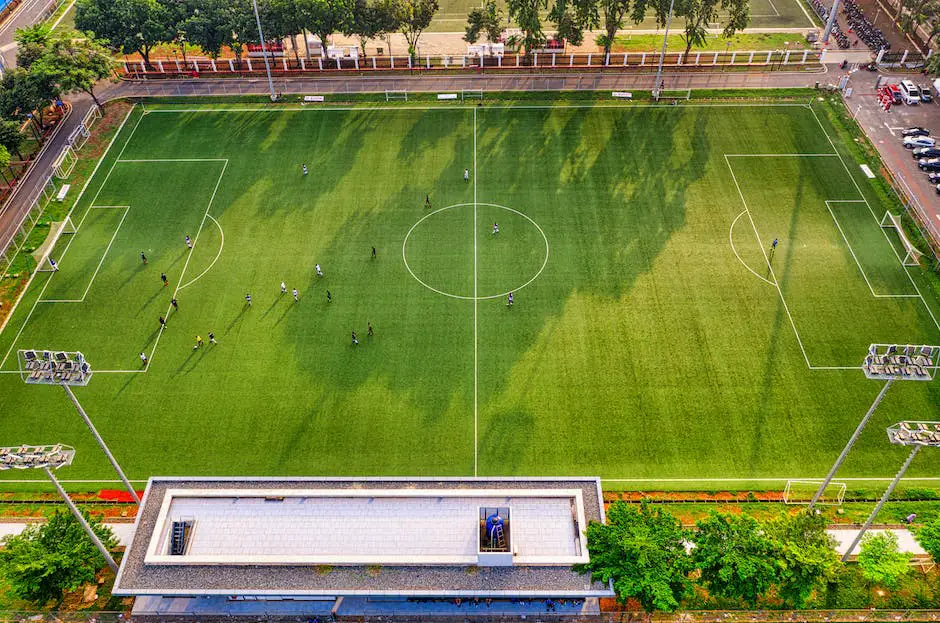
By following these football training tips and integrating these essential components into your practice sessions, you can develop into a versatile player with expanded skillsets and improved overall performance. Constantly push yourself to improve and strive for success, and remember that practice makes perfect. With dedication and hard work, you can elevate your football skills and elevate your game to new heights.

